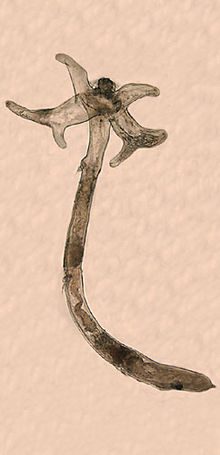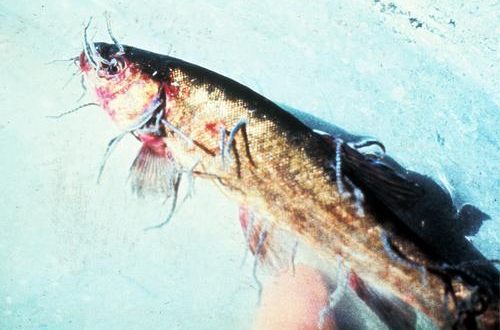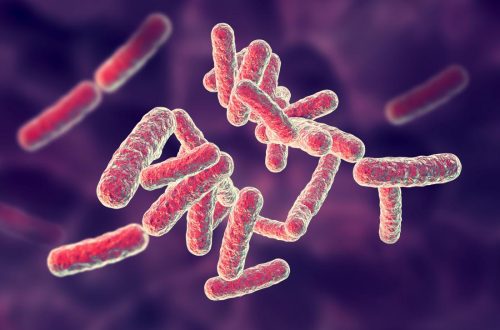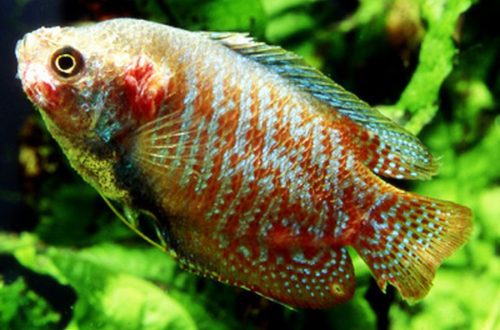
Lernaea
Lernaea (Lernaea) is the collective name of copepod parasites, which are sometimes confused with worms due to their external resemblance. Lernei are completely dependent on the host – adult and larval forms live on fish.
The parasite is introduced into the body with the help of a special organ, two eggs are formed at the other end, from which the parasite begins to resemble Y. The eggs eventually unhook and larvae appear from them, which settle on the gills of the fish, when they reach the adult state, they pass to the body of the fish and cycle repeats.
Symptoms:
The fish is trying to clean itself on the decoration of the aquarium. Whitish-green threads 1 cm long or more hang from the skin with an inflamed area at the point of attachment.
Causes of parasites, potential dangers:
Parasites enter the aquarium with new fish, they can be in the form of larvae on the gills and be invisible at the time of purchase, as well as with live food obtained from natural sources.
Parasites leave behind deep wounds into which pathogenic bacteria can penetrate. Small fish can die from wounds or from hypoxia if the gills are damaged by larvae.
Prevention:
Only careful selection of fish, preliminary quarantine and the use of live food from trusted suppliers can prevent the entry of parasites into the general aquarium.
Treatment:
Sick fish are transplanted into a separate tank, in order to avoid infection with healthy fish larvae, potassium permanganate is preliminarily dissolved in water in a ratio of 2 mg per 1 liter. On large fish, parasites can be removed with tweezers, in turn, water with potassium permanganate dissolved in it will prevent infection of open wounds, however, if there are many of them, then the removal procedure should be divided into several stages to avoid serious injuries.
Small and small fish should be immersed for 10–30 minutes in a reservoir of potassium permanganate solution at a ratio of 10 mg per 1 liter.
There are also specialized drugs for parasite control on the market, which allow treatment to be carried out directly in the community aquarium.





